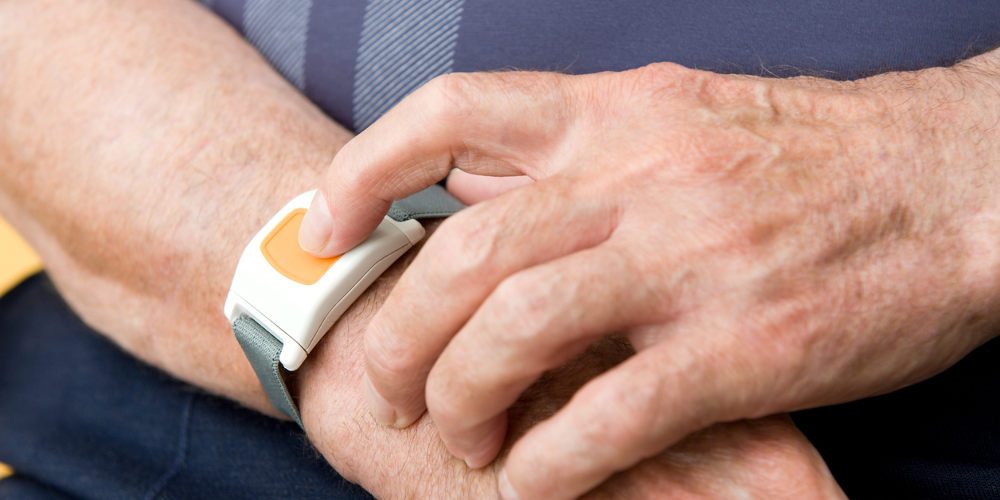There’s More to PERS Than You Probably Think
The market for personal emergency response monitoring is growing and so are the possibilities. Here’s a handful of use cases you may not have thought of.

It's an exciting time to engage in mobile personal emergency response systems services.
We often think of PERS Monitoring as just “medical monitoring,” but it’s actually much more. Break down the term and here’s what you have:
Personal; adjective
of, affecting, or belonging to a particular person rather than to anyone else.
Emergency; noun
a serious, unexpected, and often dangerous situation requiring immediate action.
Response; noun
a reaction to something.
When you combine these together you get an event specific to one person that is often in danger and requires immediate action, including some kind of response to help the individual out of the emergent situation.
This definition quickly causes you to picture situations more complex than the traditional “button in a box” sitting on a nightstand. However, even in that situation, monitoring center specialist training and alarm automation technology requirements have greatly evolved from what was previously needed to just contact EMS and call contacts.
Let’s consider a couple of use-cases for how PERS technology is used today.
Example 1. An alarm is received by the monitoring center and, once connected via two-way to the PERS unit, the customer says to the specialist, “There is a fire and I need help.” Responding to this sounds straightforward, but the specialist now needs to not only dispatch the fire department quickly, they also need to ask the customer important questions such as, “Where in the house are you?,” “Is there anyone else in the house?,” “Are you trapped?,” etc. …
The account is likely set up for requests for help or medical assistance, not for a fire alarm. In order to respond correctly to this event, the specialist must quickly change their response tactic and ask the right questions, but even that fails if the alarm automation isn’t flexible enough to easily provide the specialist the phone number for the fire department.
Example 2. An alarm is received by the monitoring center and the customer says, “Help, I am being attacked!” over the two-way connection. Again, the account was set up for a medical response, but instead of responding to someone who has fallen down, the specialist must quickly change their approach, gather important information that is not typically needed for medical alarms and dispatch the police department, all while hopefully mitigating the situation by letting everyone in the home know that the police are on the way.
Now let’s shift focus to mobile PERS devices with GPS and how monitoring of these systems has changed. mPERS devices enable the customer to request a Personal Emergency Response from virtually anywhere. For this reason, training for mPERS response must include things like map reading and navigation. However, as adoption of these devices has grown, so has the variety of applications and types of emergencies. Today, the occurrence of “nonstandard” alarms is much more commonplace.
Consider the following examples:
Example 3. A boater with an mPERS GPS device around his neck finds himself in an emergency situation and presses the button. The boater’s small vessel capsized and broke apart, and he is now floating in the water clinging to a piece of the boat. The device’s GPS coordinates report that he is about four miles off the coast of Virginia.
It’s February, the water is cold and he is in a rip current that is moving at six knots out to sea and up the coast. In order to help this customer, the monitoring center specialist had to disregard all preconceived notations on how to respond to a typical mPERS alarm and truly go “outside of the box.” In this case, the specialist dispatched the U.S. Coast Guard, which completed a successful rescue.
Example 4. An mPERS alarm is received in the monitoring center and the GPS location states it is in a small port in South America. Again, the specialist must work outside of the normal standard operating procedures. Through calls to the contacts on the call list, the specialist learns that the customer is on a cruise.
The specialist tracks down the cruise line and speaks with its operations office to determine what ship the customer is on. The cruise line then contacts the ship and dispatches onboard medical personnel to the customer’s stateroom where she is found to be having a cardiac episode.
In all of the examples above, the end results would have been very different without advance planning. It is imperative that monitoring centers train specialists on how to handle the unknown while remaining calm, collected and focused.
Applications for PERS and mPERS devices are rapidly changing. The examples I provided are just a small sampling of emergencies being sent to the monitoring center today. The market is growing and so are the possibilities.
If you enjoyed this article and want to receive more valuable industry content like this, click here to sign up for our FREE digital newsletters!

Security Is Our Business, Too
For professionals who recommend, buy and install all types of electronic security equipment, a free subscription to Commercial Integrator + Security Sales & Integration is like having a consultant on call. You’ll find an ideal balance of technology and business coverage, with installation tips and techniques for products and updates on how to add to your bottom line.
A FREE subscription to the top resource for security and integration industry will prove to be invaluable.














